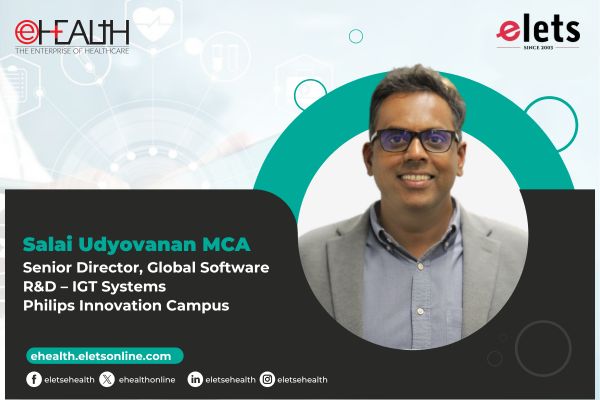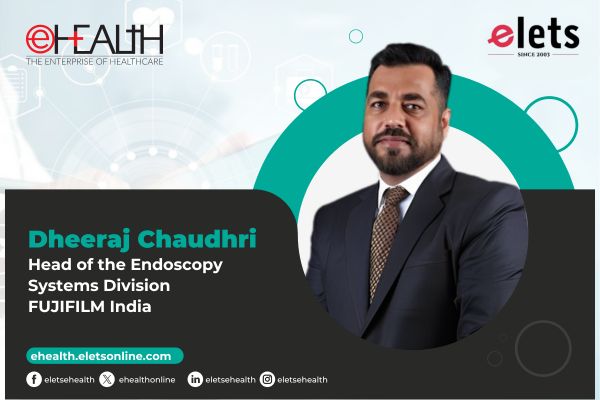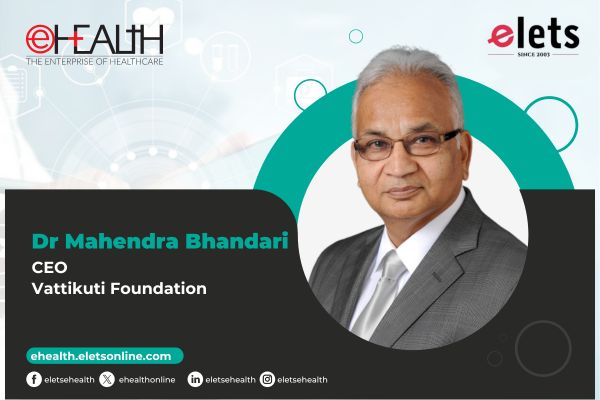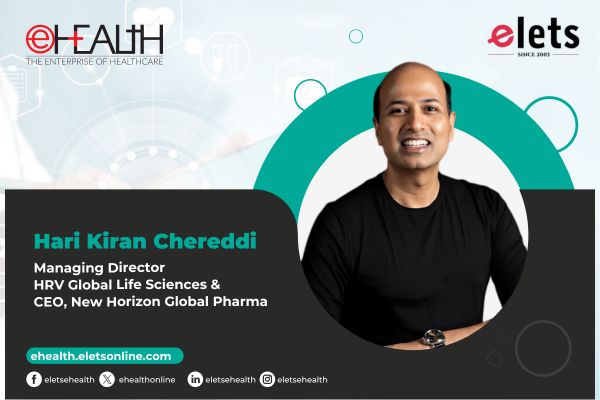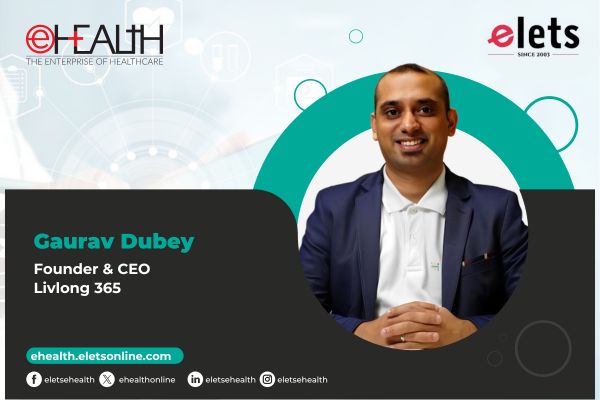
Started in 1997, Srishti Software Applications Pvt. Ltd., a Bangalore based provider of Healthcare Management Information System, has in the last decade grown from a small indigenous software company to one with a global presence. The organisation serves a wide variety of clientele with its products and services in the areas of Knowledge Management, Healthcare Information Management System and Enterprise Application Integration. Ajay Shankar Sharma, CEO, Srishti Software, shares with eHEALTH the challenges and opportunities in healthcare IT market today.

Q. In what ways does health IT differ from general enterprise IT? What differences in complexity, functionality and performance signifies healthcare specific solutions?

A. Justice to this question will perhaps require at the least an article to be written. However in brief, Healthcare IT, especially on the clinical side, deals with the lives of people, so very different degree of resilience and robustness are required in these solutions. Healthcare IT has to also deal with another eco-system, which includes Laboratory equipment, Imaging equipment etc. manufactured by other vendors. Integration of the same is complex, although integration standards exist. However, it is even more challenging in India and other developing countries since the healthcare institutions have old equipment which are not compatible with these new standards. Healthcare IT has to also deal with services organisations like the Insurance companies, since insurance is closely linked to patient care, and for this each country has different processes and practices. Patient data is extremely sensitive information and access should be allowed on only a need to know basis. With the emergence of healthcare tourism, remote availability of patient data has gained high importance. This brings a different complexity in data security and performance.

Q. What solutions and products are you currently offering for the healthcare sector?

A. We have a product line by the name of PARAS and it includes modules like, PARAS Hospital Management Information System (PARAS HMIS), which can completely automate any medical institution of any size, quickly and comprehensively. It supports the latest healthcare trends (including Web-enabled features, International Classification of Disease ICD for on-line diagnosis tools, HL7, DICOM etc.) to allow healthcare providers to do more advanced work, and to start using the system almost immediately.
PARAS EMR (Electronic Medical Record) facilitates the capture of patient details right from patient registration up till the final stage of discharge. In PARAS, the patient’s EMR can be created, retrieved, and updated online by any authorised hospital personnel, thus providing consistent patient data.
PARAS Clinical Pathways or PARAS Integrated care pathways are care plans that detail the essential steps in the care of patients with a specific clinical problem and describe the expected progress of the patient. It aims to facilitate the introduction into clinical practice of clinical guidelines and systematic, continuing audit into clinical practice; it provides a link between the establishment of clinical guidelines and their use. They help in communication with patients by giving them access to a clearly written summary of their expected care plan and progress over time.
PARAS Telemedicine involves acquiring medical data (like medical images, EMR etc.) and then transmitting this data to a doctor or medical specialist at a convenient time for assessment. It can transmit text, sound, images and video from one location to another. This system optimises the organisation and delivery of medical and professional resources, reduces the need for patients to travel and allows local health authorities to purchase a far wider range of healthcare that might be possible within any one geographic region or medical infrastructure.
PARAS PACS (Picture Archiving and Communication System) helps in storage, retri, distribution and presentation of images. It enables images such as x-rays and scans to be stored electronically and viewed on screens, so that doctors and other health professionals can access the information and compare it with previous images at the touch of a button.
PARAS Clinical Decision Support System (ISABEL CDSS) support system is designed to enhance the quality of diagnosis decision-making. Its unique feature is a diagnosis reminder system. It has proved that it is fast, easy to use, improves patient safety and quality of care by augmenting providers’ knowledge and cognitive skills in hospital and family practice.
PARAS Prescription Management System is a drug interaction module, which highlights a change in the effect of one drug when taking a second drug concomitantly. It helps to analyse the effect of the drug, which arises when taken with the already prescribed drug. Different colours represent the levels of effects. This way it helps to avoid medication errors preventing adverse drug effects and hence improves the patient care.‚ As per the hospital requirement PARAS is divided into categories such as, PARAS Ultra, Paras Lite, PARAS and PARAS Premium.
Q. Emerging healthcare industry in India is boosting the demand for hospital IT solutions/services. What is your view regarding the growing opportunity in the domestic market? What share of the Indian market do you target in the next 3 years?
A. I think the opportunity in the domestic market is expected to continue growing for another 10-12 years, and the IT-spend will zoom in the next 3 years in both public as well as private institutions. Both the public and private segments are currently on different plains of maturity from the point of view of IT-spend. The various State governments are seriously considering integrating the healthcare system by computerising the various levels of healthcare starting from District hospitals to PHCs. Many governments have attempted, but have not succeeded completely because of the sheer size. The good news is that the State governments are looking at moving ahead and starting the initiative. They have realised that an efficient healthcare program cannot be administered and monitored without an integrated IT platform. Hence, we see large healthcare IT spending from the public sector.
Looking at the private healthcare IT spending, there are many institutions, which went in for the first round of computerisation. These solutions had limited functionality and are outdated. Thus, there is a big market ready for replacement. There is a huge shortage of bed capacity in India, which will translate into many new hospitals coming up in the country. The trend with the new hospitals coming up in India is that they consider computerisation of the hospital as part of the essential infrastructure. This means more IT spending from the private healthcare segment.
Another emerging segment is Healthcare Tourism. From current revenues of around US$ 300 million, it is estimated to grow to US$ 2.2 billion in 2012. This means that by 2012, India will be catering to around 750,000 foreign patients per annum. This calls for higher bed capacity, ultra-modern Care Centers and availability of patient data remotely, and all of them call for higher IT-spend.
While the entire ecosystem is getting digitally enabled, there will be tremendous pressure on the small and medium enterprises (SME) sector, which is huge. Most of these healthcare providers are running PAS and would be forced to computerise enterprise-wide. This will throw open a new market segment for SMEs.‚ We have built various products keeping the above scenario in mind and we feel that our market share will be between 60-70%.
Q. A large number of healthcare providers in India (particularly small and mid segment) are shifting towards uptake of hosted and shared IT services. In this context how do you foresee the changing paradigm in market opportunities for standalone HIS solutions?
A. Both the models will co-exist for at least another 7 years. It is a little difficult for the shared services model to take off in India, as our healthcare providers do not have standard processes and procedures right from Patient Admission to Patient Discharge. There are no stringent laws against data mismanagement, which puts a question mark on data security. While we are not closed to any model, we feel that there will be enough market for stand alone HIS solutions from the mid-size and enterprise healthcare providers.
Q. How was your experience of working on the PACS implementation project at the President’s Estate Clinic at Rashtrapati Bhawan? Has this successful implementation at the nodal power centre inspired more confidence in other public health facilities? Which are some your other successful PACS installations?
A. It was a very enriching experience for us at Srishti. The project involved connecting multiple locations for the purpose of radiology. The studies could be sent to experts at AIIMS and Army Hospital (R&R) for further expert advice. Additionally, complete archival of studies for patients is allowed, comparing previous studies for the same patient, which facilitates better decision-making by the radiologists and doctors. In all capacities this, I would say, was a great initiative from the hospital of the first citizen of our country to provide better healthcare for its staff. I think other government institutes will take inspiration from this and follow the way shown by the President of India.
We have recently completed deployment at KG Hospital, Coimbatore. There the hospital is planning to use the IT infrastructure to not only diagnose patients who physically arriving at their main center, but also remote outreach centres where radio-diagnostic facilities are difficult to get.
Q. What differences do you notice in terms of IT maturity of healthcare industry in developed markets (such as US, UK, Middle-East, SE Asia) and that of India? How different are your strategies in terms of addressing these different geographies?
A. In India, buyers are more discerning and are not very eager to experiment. Therefore, whatever we offer has to be foolproof and time-tested. Based on this fact, we have realigned our sales and marketing strategy to meet Indian customers’ expectations.
Q. How do you gauge the market in Middle East, Africa and East Asia? How successful have you been so far in your efforts to enter these markets and how receptive are they to Indian solution providers?
A. They are similar in nature as far as buying behavior is concerned. Few markets are more price-sensitive than India and few are more willing to pay a premium. Indian healthcare solutions are finding more acceptance in these markets now than ever before because of rich functionality and reasonable pricing. Barring a few countries in Africa, it is still a challenging market. Middle East and East Asia is a good replacement market since they had implemented legacy or out dated systems. Again, some countries are targeting Healthcare Tourism, which provides new opportunities. We have met reasonable success in these markets so far, and have a couple of implementations in the process.
Be a part of Elets Collaborative Initiatives. Join Us for Upcoming Events and explore business opportunities. Like us on Facebook , connect with us on LinkedIn and follow us on Twitter , Instagram.
"Exciting news! Elets technomedia is now on WhatsApp Channels Subscribe today by clicking the link and stay updated with the latest insights!" Click here!







